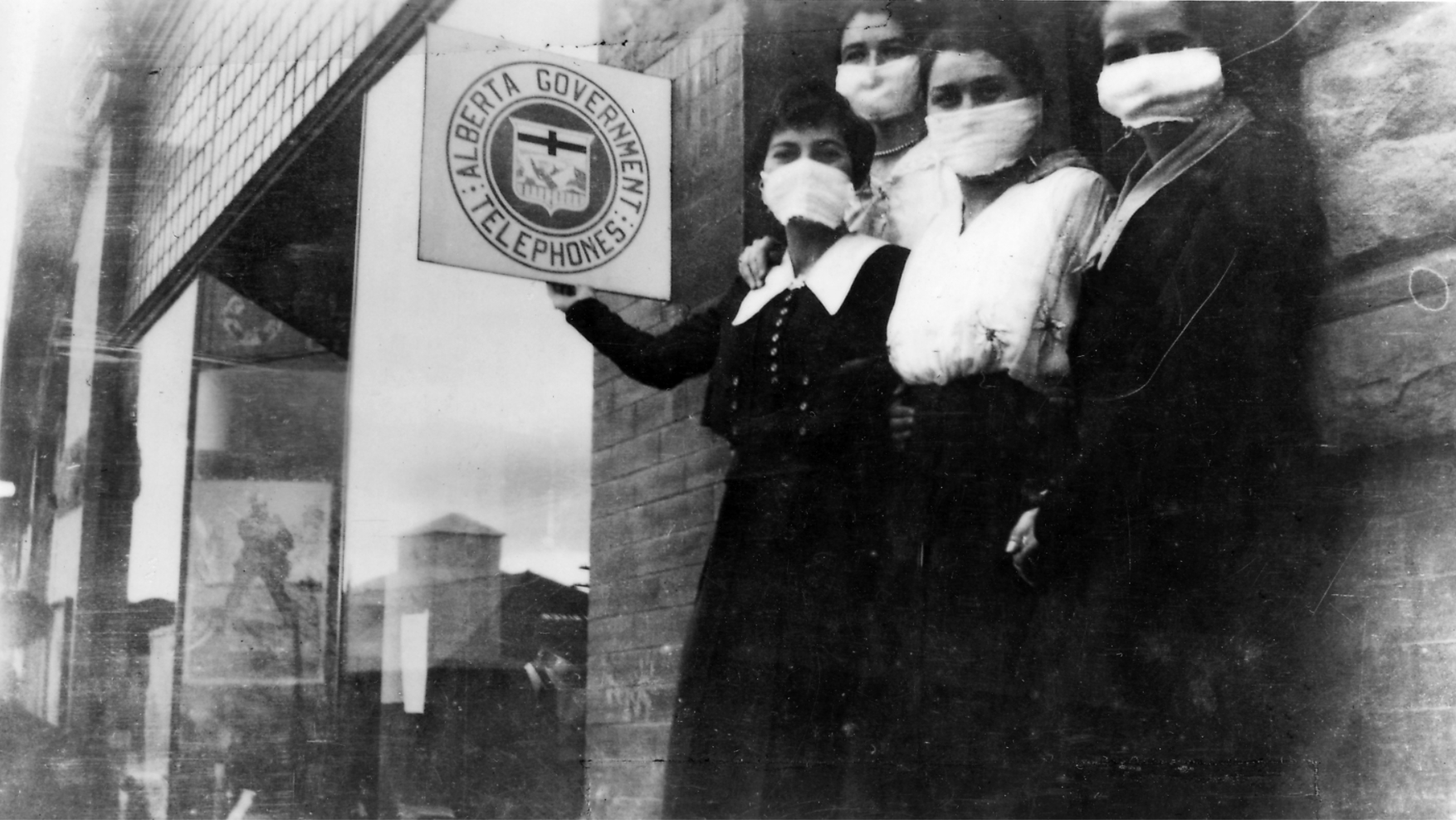Throughout 2019, ALHI will be posting vignettes regarding the Great Labour Revolt of 1919. Events commemorating this centennial will be held throughout the province later in 2019 with a focus on what the events of 1919 mean today for the strategies of working people to create better lives in a society where they still exercise little real control over their workplaces and communities.
This page is an archive of all of the vignettes, as well as some other resources.
Interviews relating to the Great Labour Revolt, 1919 (with transcripts and videos conducted with labour historians attending the Winnipeg 1919 Centennial Conference.)
A page about Telephone Girls, Maria’s Dunn’s Anthem for the Great Labour Revolt, 1919
1919: THE GREAT LABOUR REVOLT
An international uprising of workers followed World War I. The best known Canadian manifestation was the Winnipeg General Strike. Less known is that Alberta workers joined the 1919 uprising against capitalist exploitation and economic instability with two general strikes (Edmonton and Calgary) and a shutdown of the province’s large coal-mining sector. This video uses the workers’ words to tell the story of why they chose to revolt and call for a different power structure in which workers’ needs would outweigh capitalists’ unlimited demands for profits. We hear from miners, telephone operators, packinghouse workers, nurses, housewives, and organizers of restaurant workers, among others, about what life was like for working people and how they envisioned taking matters into their own hands to change everything. The voices you hear in this video are voices of both professional actors and amateurs knowledgable about the communities they are representing. But the words are the documented statements of workers of 1919. The workers in the video are composite characters whose words come from testimonies before such organizations as the Mathers Commission, a federal royal commission in 1919 established to study the causes of worker unrest in Canada.
If you are interested in knowing about the process for creating the Ukrainian and Chinese voices for this video, please view this video.
Telephone Girls: Maria Dunn’s Anthem for the Great Labour Revolt, 1919
Watch on YouTube: Song Only Version & Troublemakers Live Version Glenbow – GL – NA-3452-2, telephone operators wearing face masks to protect against the Spanish Flu.
Glenbow – GL – NA-3452-2, telephone operators wearing face masks to protect against the Spanish Flu.
Maria Dunn’s “Telephone Girls” is her song commemorating the workers’ uprising of 1919, a song commissioned by ALHI to mark the Great Labour Revolt of that year. Women telephone operators were the first Winnipeg workers to stay off the job at the start of the Winnipeg General Strike in May 1919, so Maria imagined what a conversation would have been among “telephone girls” here in Alberta, where about 10,000 workers in various industries also went on strike, in sympathy with Winnipeg and for their own good reasons. As the working people most in contact with all elements of society, the “telephone girls” tell the story of the injustices against which workers revolted in 1919 from their own standpoint as working women and from the standpoint of all the working people they communicated with on a daily basis. From World War One to its aftermath–the Spanish flu pandemic, mass unemployment, an employers’ assault on workers’ efforts to organize, and government indifference to workers’ precarious lives–women telephone operators experienced both oppression and militancy and heard the specifics of other workers’ similar experiences. The song reflects both the fighting spirit of workers and their optimism that their grassroots efforts to change society would make a real difference.
Read the song’s lyrics (PDF download). Credits: Telephone Girls© Maria Dunn, 2019 (SOCAN)
www.mariadunn.com Maria Dunn – vocal
Chris Andrew – piano
Don Bouzek – video
The 1919 Workers’ Revolt In Calgary: a series of information panels about the 1919 strike in Calgary, developed by a team that included people from ALHI.
THE GREAT LABOUR REVOLT, 1919 – ALHI’S LATEST BOOKLET
“The Great Labour Revolt, 1919” is ALHI’s latest booklet. Written by historian Alvin Finkel, the president of the Alberta Labour History Institute, “The Great Labour Revolt, 1919” focuses on general strikes and the larger strike wave of 1919 in Alberta. it provides the first-person stories that explain why workers went on strike, placing the Alberta strikes in their national and international context. Download the book (in PDF) by clicking here.
A digital exhibit on the Winnipeg General Strike was launched on May 15, 2019. The completed exhibit is now available in its entirety at the following link: 1919strike.lib.umanitoba.ca
Documents Related to 1919 Labour Events
Download ALHI’s brochure (PDF) about the Great Labour Revolt of 1919
The Great Labour Revolt of 1919: An Introduction
REVOLUTIONARY CHANGES SUPPORTED BY ALBERTA FEDERATION OF LABOUR IN JANUARY 1919
1919 REMEMBERED: WORKERS VIEWED WWI AS A CAPITALIST WAR
THE MAKING OF A REVOLUTIONARY WOMAN TRADE UNIONIST IN CALGARY, 1919 : JEAN MACWILLIAM
THE SEATTLE GENERAL STRIKE, FEBRUARY 6-10, 1919
Western Canadian Labour Conference, March 1919: When Canadian Trade Unionists Called for Revolution
AN EDMONTON-AREA MINER SPEAKS OUT IN 1919
VOTING FOR ONE BIG UNION: APRIL 1919
The Calgary Freight Handlers’ Strike, 1918: Prelude to the Labour Revolt
